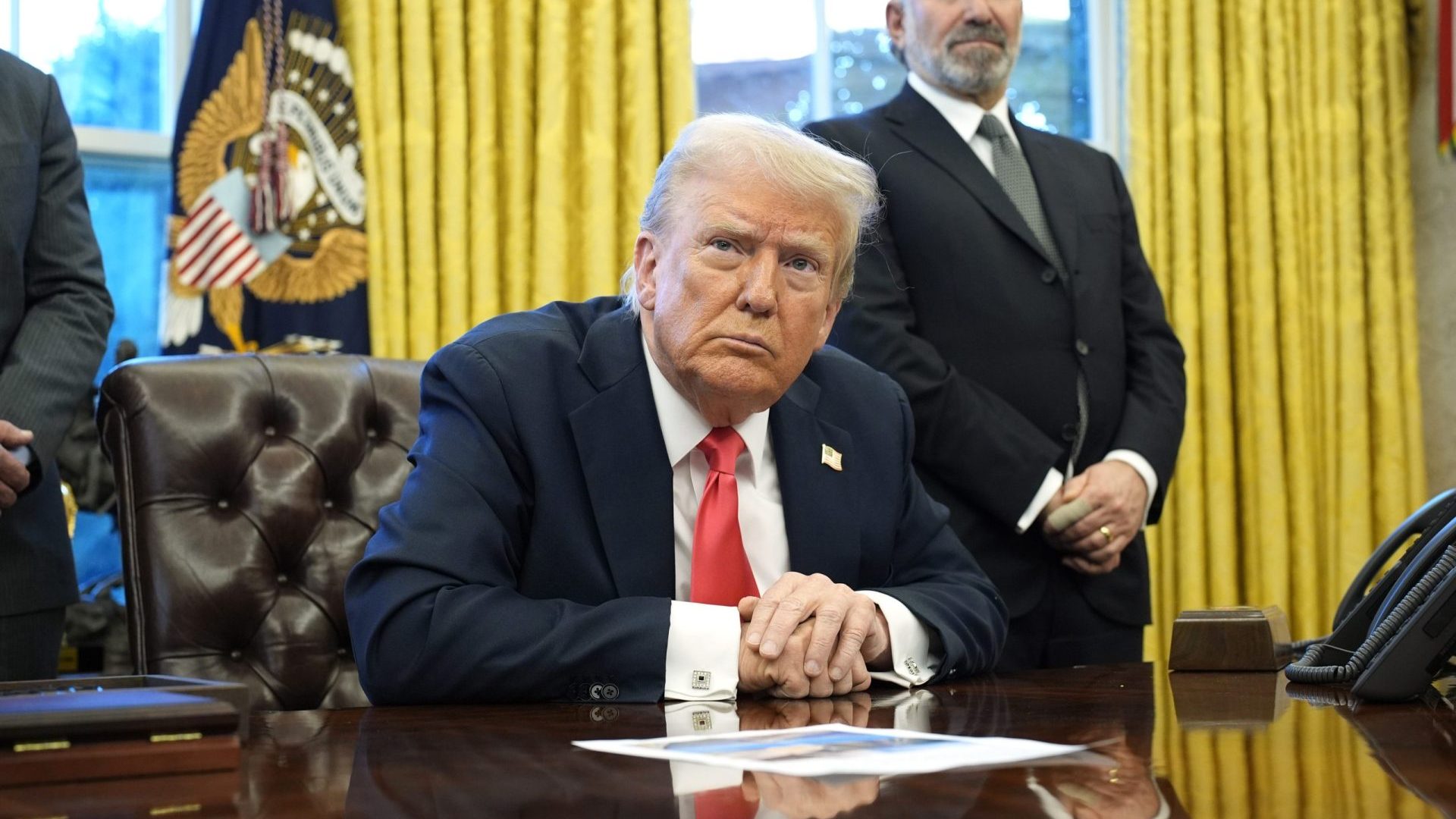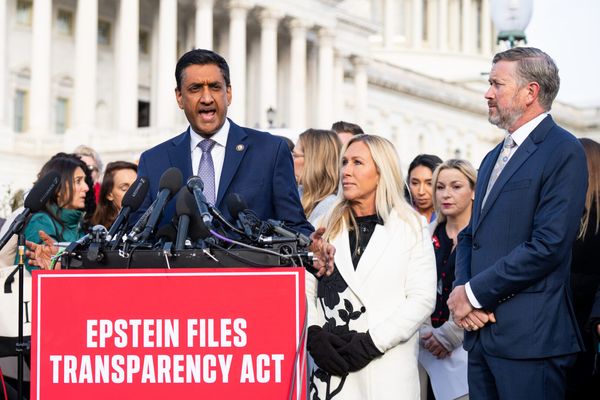
The President of the United States is arguably the most important job in the country. Compared to the salaries of executives of Fortune 100 companies, however, it may appear that the paycheck doesn’t keep up. Don’t worry, though. Compared to the national average salary, the president is extremely well compensated.
Consider This: I Asked ChatGPT What Would Happen If Billionaires Paid Taxes at the Same Rate as the Middle Class
Learn More: How Middle-Class Earners Are Quietly Becoming Millionaires — and How You Can, Too
As President Donald Trump is sitting in the Oval Office, it’s interesting to see just how much of a paycheck he earns, which, as of his second term in 2025, is $400,000 a year. While it’s true that the president’s salary is modest only by some standards, other perks go along with the job, and those often lead to far greater earnings after the term has ended.
Here’s a closer look at what the president’s compensation would be in the coming years of his second term, and what it has been historically.
Quick Take: How Much Does the President Make?
The buck may stop at the White House, but that doesn’t mean decisions haven’t been made about the size of the presidential paycheck. Here are a few key takeaways:
- The president’s salary is set at $400,000, which is taxable to the president as income.
- There is also a $50,000 expense account, which is not taxed. This account is used to defray expenses associated with the president’s official duties, and, if not used, reverts to the U.S. Treasury.
- There is $100,000 allotted for the nontaxable travel account and $19,000 for entertainment.
Presidential Historical Salary Range
The president gets a raise far less often than most workers. The presidential salary has only been changed five times since the initial salary.
- 1789: $25,000 per year
- 1873: $50,000 per year
- 1909: $75,000 per year
- 1949: $100,000 per year
- 1969: $200,000 per year
- 1999: $400,000 per year — remains to present day
Some presidents don’t take their salary. George Washington declined his presidential salary in his inaugural address. John F. Kennedy and Herbert Hoover donated their salaries to charity, and, in the case of Hoover, also to staff. Donald Trump donated his salary to several federal departments.
The Presidential Pension: What They Make After Leaving Office
When the president leaves office, they are still considered a federal employee and therefore receive an annual pension, travel expenses and more. Here are some insights about post-presidential income:
- $221,400 annual pension for life
- Allowances for office space and staffing, beginning six months after leaving office
- $1 million in travel expenses, or are reimbursed up to that amount
- Lifetime health benefits
- Funeral ceremony with full honors and, if they so choose, a burial at Arlington National Cemetery
What Some Former Presidents Did After Leaving Office
Being President of the United States is a tough act to follow, but many who leave the office don’t wish to retire. Here’s what some former presidents have done since their terms ended.
Barack Obama
Barack Obama earned $400,000 a year as president, up from the $157,000 per year he earned as a U.S. Senator before becoming president. Before that, Michelle Obama was the family’s primary breadwinner, as she earned $247,000 as an attorney, according to Celebrity Net Worth.
In 2017, both of the Obamas signed publishing contracts for their autobiographies, to the tune of $60 million. They own homes in Washington, D.C., and on Martha’s Vineyard, Mass., and have an estimated worth of $70 million.
George W. Bush
After leaving the White House, George W. Bush also got a book deal but was reported to have been paid just $10 million. His memoir, “Decision Points” was published in 2010.
He has also written “A Charge to Keep,” “We Will Prevail: President George W. Bush on War, Terrorism and Freedom,” “George W. Bush on God and on Country: The President Speaks Out About Faith, Principle, and Patriotism” and “41: A Portrait of My Father.”
A collection of his speeches was published as “The George W. Bush Foreign Policy Reader: Presidential Speeches with Commentary.”
Bill Clinton
After leaving the White House, Bill Clinton, like many other ex-presidents, worked on establishing his presidential library and had many speaking engagements. Unlike any other ex-president in history, however, he was also very active in his wife’s campaign for president in 2016.
Like Obama, Bill Clinton also wrote a book after he left the White House, called “Between Hope and History,” and he was reportedly paid $14 million to do so. Since then, he has written three other non-fiction books, called “My Life,” “Giving” and “Back to Work.”
Clinton also co-authored two fiction books with best-selling author James Patterson. Political thrillers “The President is Missing” and “The President’s Daughter” were both on the New York Times bestseller list.
George H. W. Bush
Some ex-presidents have sufficient assets that they don’t need to work after leaving the office.
When George H. W. Bush finished his presidential term, he re-entered private life by volunteering at a church and sitting on the board of a local hospital. He set up his presidential library and museum and raised funds for disaster relief in Asia along with Bill Clinton. He also campaigned for his sons George W. Bush and Jeb Bush.
Jimmy Carter
Carter was not only an unusual president, but he is also an unusual ex-president. He has dedicated his post-White House life to human rights and charitable causes.
He is a very visible volunteer with Habitat for Humanity, an organization that builds houses for the underprivileged. While other ex-presidents use their notoriety to raise funds and give speeches, Carter can be seen hammering nails and painting walls.
After his presidency, Carter wrote “Keeping Faith: Memoirs of a President,” “Turning Point” and “An Hour Before Daylight.”
Final Take To GO
Being President of the United States requires selfless dedication to the country, and since the salary is modest by comparison, it’s understandable that some former presidents are well-compensated for sharing their experience. Writing books, giving speeches and working for charitable organizations are all ways that ex-presidents can benefit from their unique position.
Of course, presidents get other benefits, as well. Their cost of living is virtually non-existent, as they live in furnished residences such as the White House, and travel expenses are paid for through such means as Air Force One. They and their spouses get Secret Service protection for life.
Caitlyn Moorhead contributed to the reporting for this article.
More From GOBankingRates
- 5 Luxury SUVs That Will Have Massive Price Drops in Fall 2025
- I Help People Retire Every Day -- Here's the Most Common Retirement Mistake People Make
- 6 Clever Ways to Pocket an Extra $1K This Month
- 6 Safe Accounts Proven to Grow Your Money Up to 13x Faster
This article originally appeared on GOBankingRates.com: The President’s Paycheck: A Look at America’s Presidential Salaries







